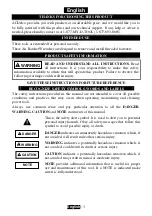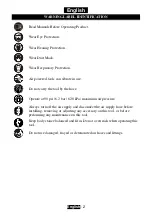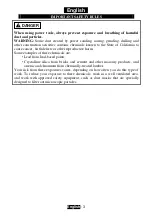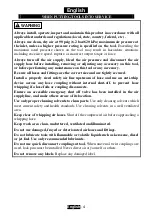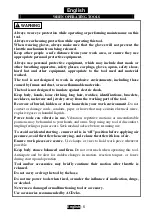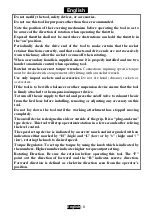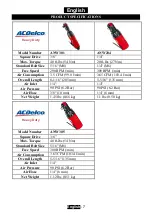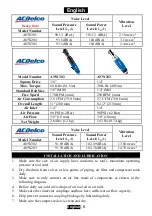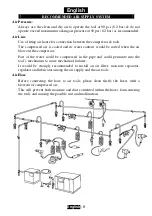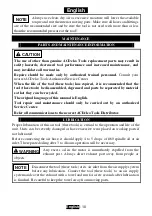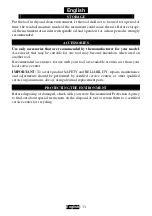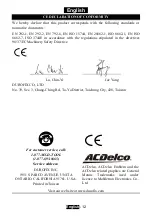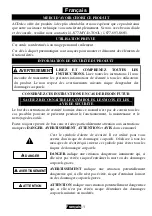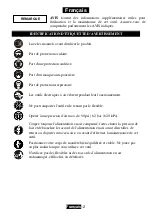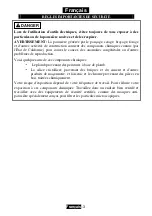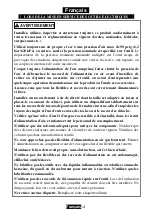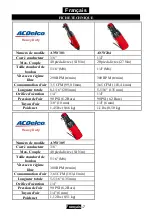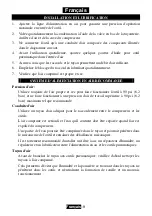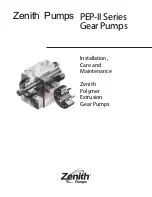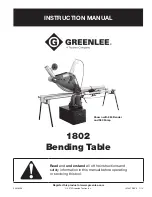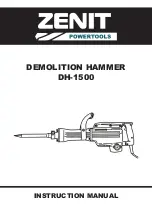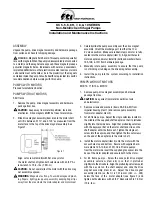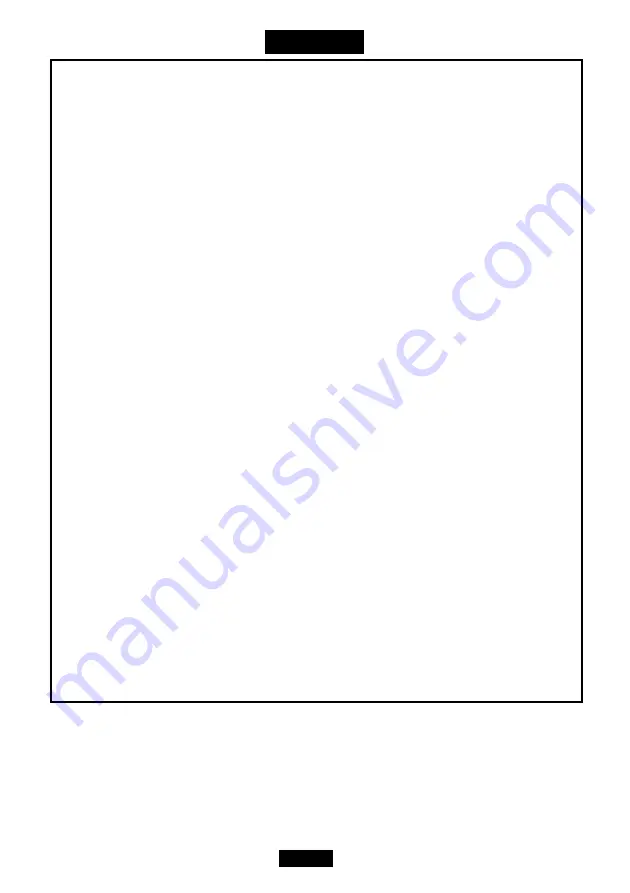
1
English
1
English
-6
Do not modify the tool, safety devices, or accessories.
Do not use this tool for purposes other than those recommended.
Note the position of the reversing mechanism before operating the tool so as to
be aware of the direction of rotation when operating the throttle.
Exposed throttles shall not be used where obstructions can hold the throttle in
the “on” position.
Periodically check the drive end of the tool to make certain that the socket
retainer functions correctly, and that sockets and drive ends are not excessively
worn which may allow the socket to come off when rotating.
When a secondary handle is supplied, ensure it is properly installed and use two
hands to maintain control when operating tool.
Ratchet wrenches are not torque wrenches.
Connections requiring specific torque
must be checked with a torque meter after fitting with an ratchet wrench.
Use only impact sockets and accessories.
Do not use hand (chrome) sockets or
accessories.
If the tool is to be with a balancer or other suspension devise ensure that the tool
is firmly attached to the suspension/support device.
To turn off the air supply to the tool and press the on/off valve to exhaust the air
from the feed hose before installing, removing or adjusting any accessory on this
tool.
Do not lay down the tool until the working attachment has stopped moving
completely.
The on/off device is designed in side or outside of the grip. It is a “plug-and-run”
type device. This tool will stop operation/rotation in a few seconds after reliving
the level control.
The speed set up device is indicated by an arrow mark and intergraded with an
indication either marked by “H” (high) and “L” (low) or by “+” (high) and “-”
(low), rotating the knob to desired speed.
Torque Regulator. To set up the torque by using the knob which is indicated by
the numbers. Higher number indicates higher torque output setting.
Rotating Direction. Be sure the rotation before operating this tool. The “F”
point out the direction of forward and the “R” indicates reserve direction.
Forward direction is defined as clockwise direction seen from the operator’s
position.


